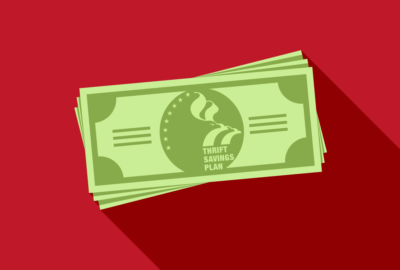Like most of you, I’m sure, I’m way too smart and sophisticated to play the lottery. To stand in line in the evening with a bunch of desperate looking people and wait my turn Look at the odds!
That said…. I have been putting about $20 per week ($40 the last couple weeks) on the Powerball. And it’s a big one. I get them at the deli near my house. My plan is that in the unlikely event I win, I will donate money to charity, help my family and anonymously give some to several little old ladies down the street. But I know the odds are long even though my intentions are commendable, if I do say so myself.
Although, there is another way for civilians who work for Uncle Sam and members of the uniformed military to make some big money. It’s the Thrift Savings Plan, the government’s in-house 401k. It offers a generous match to investors, low fees and a great track record.
As of last December 30, the TSP had 75,420 people with accounts at or above $1 million. The number almost doubled last year, and there was no luck involved. They all invested, got the match, stuck with the stock-indexed funds thorough a recession, pandemic, etc. — for an average of 29 years. That’s time that will pass regardless of what you are doing or investing. Or not. Many others have retirement nest eggs in the $500k to $999k range. In recent weeks, I’ve been in touch with several of them. While different people in different jobs, goals, personalities — they all have one thing in common. A generally steady-as-it-goes investing course. We outlined one last week. To see where you are at, here are the latest numbers.
I also heard from a long-time fed whose account had jumped to $2 million in November. Not luck!! Time and patience. And some sleepless nights during the Great Recession and the current pandemic. He started as a GS-7 in 1986 and retired in 2018 as a GS-14. Not an overnight success, but he did very, very well. Although he said he weakened a couple of times, he mostly stuck with the C, S and I funds (large and small cap stock and international index funds), with some in the G-fund ( Treasury securities) — in good times and bad. When I asked him for details, he provided this:
Not only are my record keeping and organizational skills horrible, my memory is off as well. I said earlier I stuck with a C/S fund split for the majority of the time. I’m finding that is not the case. Between online TSP statements that started in 2003 and earlier mailed TSP statements, I’ve been able to piece some history together, though there are gaps. I’m a bit surprised looking back because I can’t recall making the fund contributions or reallocations I did.
Starting out I was in the G fund for a while until I learned more about the other funds. Here is a broken timeline of what I could piece together.
- Sep 1986: 100% G. Reported for work (most likely stayed in G for a year or two) at least 5% contribution to get matching
- Nov 1992: 100% C
- Apr 1993: Took out TSP loan for $16,900, paid back over 7 years
- Jul 1993-1994: 50/50 F/C contributions. 10% of salary to TSP confirmed
- 1995: 100% C
- 1996-2002: missing statements
- 2003: 100% C 10% of salary
- 2004: 30/40/30 C/S/I maxed out contributions from here on
- 2005-2013: 50/50 S/I
- 2014-2019: 50/50 C/S
- 2020: 40/30/30 G/C/S
During the Great Recession, I just let it all ride. No movement from S and I. I did cringe when seeing how much was lost.
The last couple of years have been stressful. With actual retirement happening within the next few years and the market swaying with every Tweet (not to mention COVID), I moved enough funds to G (20% in 2019) to hedge my bets in case the market tanked. I’ve since (July 2020) doubled the amount in the G fund to 40%. Should the market tank again, I’ll be moving half of my G funds back to C and S. In the meantime, 60% of my TSP is earning interest.
Hope this helps some.
I think I’ll skip the deli for the next few weeks. At least the lottery line!
Nearly Useless Factoid
By Alazar Moges
St. Patrick’s Day is now of course most associated with the color green. But initially, Saint Patrick’s color was blue, not green, say historians. The use of green began during the 1798 Irish Rebellion when the clover became a symbol of nationalism and the evolution began.
Source: TIME Magazine
Copyright
© 2024 Federal News Network. All rights reserved. This website is not intended for users located within the European Economic Area.
